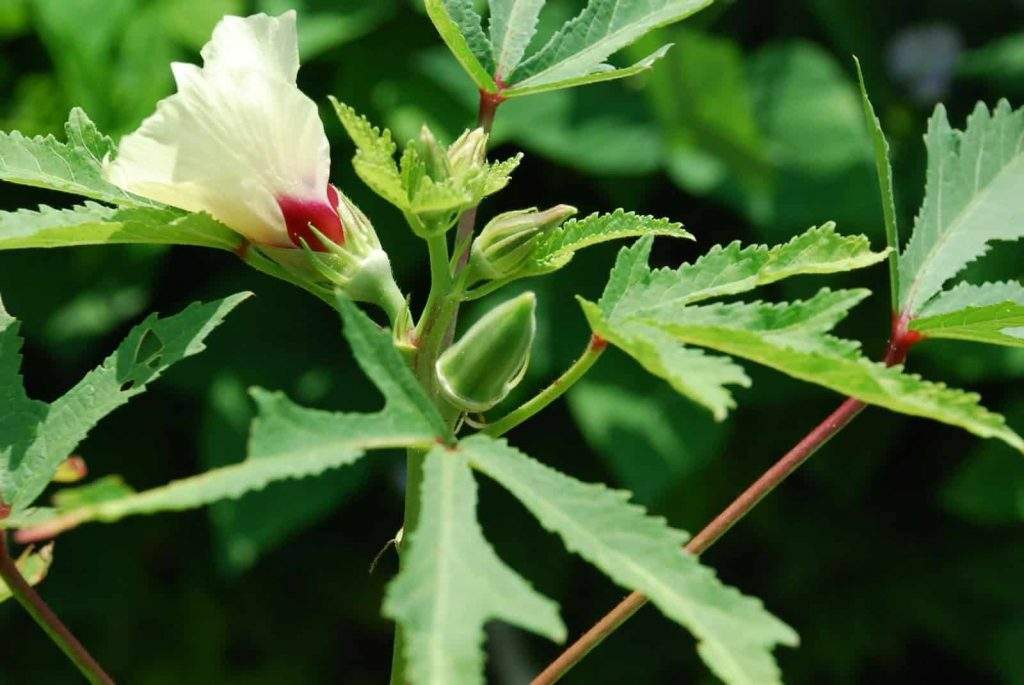
Okra Cultivation Guide – The Step By Step Farming Procedure

Lady finger is a tender heat-loving vegetable growing to 4 – 7 feet tall. The plant produces green and red seed pods that you can harvest 3 to 5 inches long and sometimes longer. Plant farming is easy, as you will learn from this lady’s finger farming guide.
However, like every other cultivation process, okra cultivation requires a lot of commitment, dedication, and good knowledge to be successful. Okra is an economically significant vegetable crop of many countries in Africa, including Ghana, Zambia, Ethiopia, Nigeria, Egypt and many others.
Hence, its nickname is “Lady’s Finger”, and in most other places, people sometimes refer to it as “Gumbo”. Farmers growing the okra vegetables for profit meet the demands of both domestic and foreign markets.
These are the Health Benefits of Okra:-
1. Okra helps to control hunger
Okra comes with a soluble fibre that makes you feel full faster and for longer. This vegetable keeps your calorie intake in check as well as controls hunger; as a result, your weight loss goals become possible.
2. Akola has vital nutrients that can curb malnutrition
Elimination of malnutrition becomes possible with okra as the legume contains zinc, calcium, fibre, protein, iron, and essential nutrients for the body.
3. Okra provides Vitamin A that helps to uplift eyesight
Okra provides vitamin A and beta-carotene that are crucial nutrients for maintaining good eyesight. These nutrients we know as a ward off eye diseases and save from age-related eye disorders.
The Okra Cultivation Guide:-
Climatic requirements
Okra is a summer – plant that cannot withstand low temperatures for very long. And frost may also be very dangerous for the plant. So farmers grow the crop ideal in hot climates with a 22 °C minimum temperature and a maximum of 35 °C. Though okra is highly resistant to drought, it still requires an evenly distributed annual rainfall of up to 1000 mm for optimum yield and growth. Farmers should irrigate where there is drought.
Site Selection
Okra vegetables grow well on a wide variety of soil types, making it easy for you to get started. When farmers grow the vegetables, the plant requires light, well-draining loam soil rich in organic matter. A soil with a slightly acidic pH between 5.8 – 6.8 is recommended for optimum growth. Before planting, take soil samples on each proposed area for testing to determine true fertility.
Land Preparation
Land preparation is a significant step for farmers to grow a good crop. Farmers should prepare the land to ensure the installation of a uniform stand. Plants thrive best on raised beds than when planted on flat soil.
Therefore, fertilize the planting beds in advance and turn all plant residues into the soil to give them time to decompose before planting the ladybugs. Preliminary land preparation also allows many weed seeds to germinate and become visible for destruction using herbicides.
Additionally, soil testing in the site selection phase will reveal whether nematodes are present in the soil. It is important to mulch the soil, as ladybugs are susceptible to damage from nematodes.
Choose the best time for planting okra
Generally, farmers should start sowing okra in the dry season, when the weather is still sunny and warm. As stated in this okra cultivation, okra is a heat-loving annual crop. It requires temperatures between 22 to 35 degrees Fahrenheit for optimum growth, flowering and pod development. Therefore, the soil temperature should fall within this range before planting. Otherwise, the seeds can rot and never germinate and, therefore, the yield will decrease.
Okra Plant’s Spacing and Ensure Proper Planting
Farmers plant the okra manually or by the use of seed planters. When planting, sow seeds at ½ to 1 inch deep into the soil, spaced at 12 to 15 inches. The spacing will ensure that the plants get enough nutrients, sunlight and moisture. Soak the seeds in water overnight before sowing. It helps in faster germination.
Use crop rotation to control pests and weeds
You don’t have to plant okra vegetables alone. You can intercrop with other plants like onions and corn. Research has shown that intercropping okra with onion significantly scarcity leaf damage caused by Podagrica spp. Intercropping is significant in cultivating a lady’s finger as there is a high potential for damage to a lady’s finger by nematodes.
Follow crop rotation using crops such as maize, sorghum, and other grass crops, to prevent a build-up of nematode populations on the farm. However, do not rotate okra with crops that are also vulnerable to nematodes like squash and sweet potatoes.
Farming requires various tools, which play an indispensable role in the processing of agriculture. Thus, okra farming needs several types of equipment, which play a significant role in agriculture. Tractor, Implements and harvesters are the most pivotal in okra farming. Hence we suggest the Mahindra 575 tractor for enhancing the efficiency.
For more information regarding okra farming and any other farming, stay tuned with us.